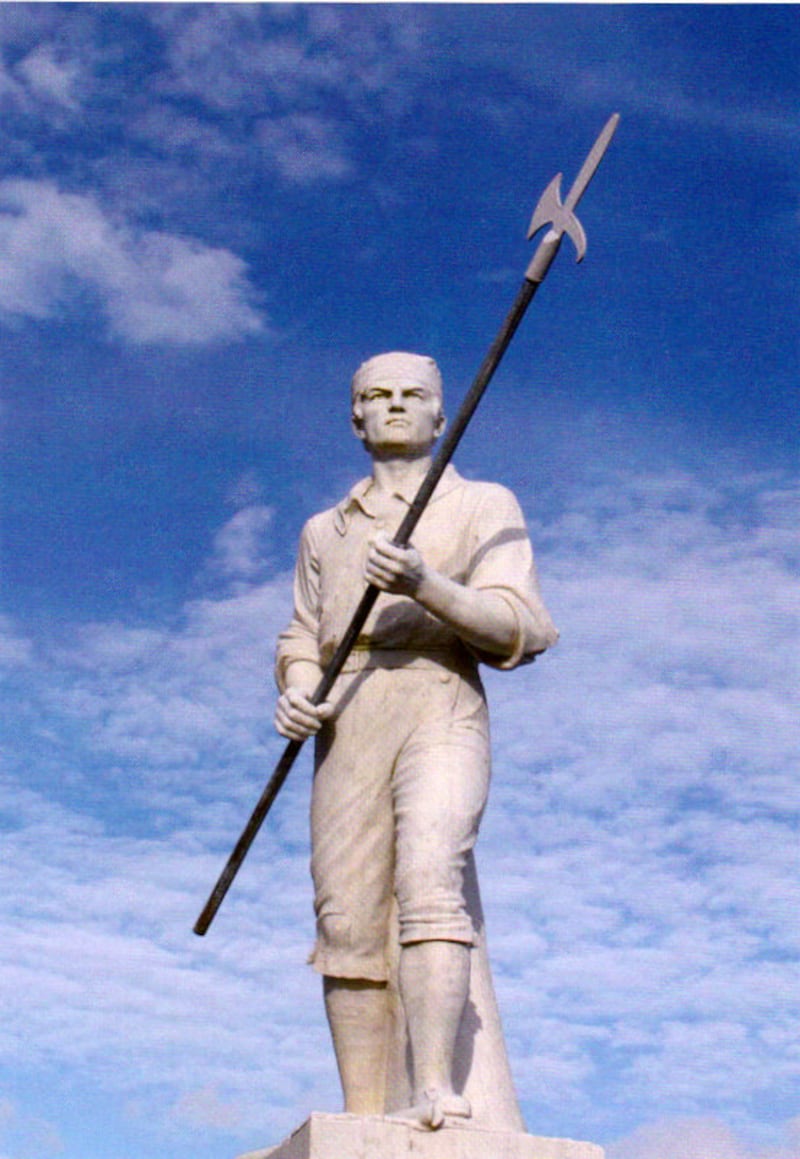For the local historian an acre of land is fertile ground for disquisitions on multifarious topics. Through her research, Margaret Connolly has assiduously recorded the lives of people living in an 800-acre townland of north Wicklow, a patchwork of small fields, lanes, farms and ditches. Her book Aghowle Where the Divil Ate the Tinker (Applefield, €18) must qualify as a record of sorts by someone in rapt communion with the farming families in one small area. The title comes from a 1798 refrain connected to Dinny Byrne, a rebel on the run from the Yeomen who disguised himself as a tinker.
The author’s ancestors lived in the townland since the early 1800s and she grew up in Aghowle (pronounced Ah-howl) in the 1960s, a time when fireplaces still had a big black kettle constantly on the boil. She often heard stories of the past about this tight-knit community and the impact on the area of the Famine, emigration, evictions, political struggle and the Big Snow of 1947.
Not only has she recorded people talking about subjects such as the annual threshing and sheep shearing, killing pigs, or making jam and bread, she has also rootled about hedges and scrutinised the landscape seeking out wart, or bullaun stones, fairy forts, sheep folds and turf clamps. The changes in living conditions, such as the arrival of the electric light in 1955, are documented. One woman, who said she survived for 80 years without it, refused to accept the offer because she felt she would be immediately electrocuted, but eventually changed her mind.
Historians in Longford have also been actively engaged in chronicling their past. In Drumlish & Ballinamuck, Heritage & History (Drumlish Heritage & History Society, edited by Seán Murphy, €25) a broad narrative sweep reflects the community of north Longford. Ballinamuck is remembered as the place where General Humbert and a force of Frenchmen made their final stand with the Longford rebels on September 8th, 1798, while Drumlish, a village of unique character, is known for its tradition of storytelling.

Although the area is mainly low-lying, Corn Hill – Longford’s highest point – nonetheless dominates the countryside with commanding views. Insights into forgotten farming practices include a chapter on corn, water and tucking mills which were important features of the landscape. In the 1950s, Annie Prunty of Fardrumman recalled the days when oats were used to make sowens (known as bull’s milk), scowder and flummery.
Two books on Kerry consider differing aspects of the county's history. In Mary Coffey Coghlan's well-researched Echoes of Dunloe: A History (€25) she presents the story of the Gap of Dunloe from its earliest beginnings up to 1960 in 20 richly layered chapters. The author is ideally suited for this job since she is the daughter of Jerome and Joan Coffey, the fourth generation to own Kate Kearney's Cottage founded in 1849. Kate was a woman of exceptional beauty, known for her potent poitín "Kate Kearney's mountain dew". Poets and writers, including Wordsworth and Tennyson, celebrated the area while Charlotte Brontë fell off her horse riding through the Gap on her honeymoon in 1854.
Profusely illustrated with evocative black-and-white and colour photographs, sketches, maps, paintings and postcards, the book is a glimpse into a simpler world which will stir memories. Its title refers to the fact that the Gap was a land made for echoes and in the mid-19th century the Bianconi bugle awakened and astonished travellers. From his elevated position on a horse, Paddy “Toas” Doyle, the last bugler, amused visitors with recitations, including the verse: “I’ve seen Kate Kearney’s daughter’s daughters/And I’ve seen Killarney’s beauteous waters/I’ve seen the Bull and the Purple too/And I’ve drunk Kate Kearney’s mountain dew”.
Aside from hearing buglers years ago, some people will have heard of the legendary island of Hy Brasil but few may have seen the remains of a small hidden city in Kerry’s offshore waters. The phantom city of Kilstoheen, or Cill Stuithín, lies under the Shannon waves between Ballybunion and Ballylongford. Ruled over by a powerful chieftain, it is said to be a wondrous place of white quartz buildings, towers and churches paved with marble where enchanted horses may be seen grazing on moonlit nights on riverbanks. The chieftain’s wizardry allows him to keep charms over the city so that it is always hidden, except once every seven years when it rises from the depths.
This story of fabled spaces is recounted in Kerry Folk Tales (History Press Ireland, £12.99) jointly authored by Gary Branigan and Luke Eastwood, who explore myths and customs dealing with beliefs filled with superstition. The book embraces piseógaí such as "Children will grow no further if they put a spade or shovel on their shoulder inside the house", or "The last person to leave the church following a funeral would be the next one to die".
Paul Clements is taking part in a panel discussion on the writer Ben Kiely at the Omagh Literary Festival on October 13th









